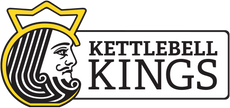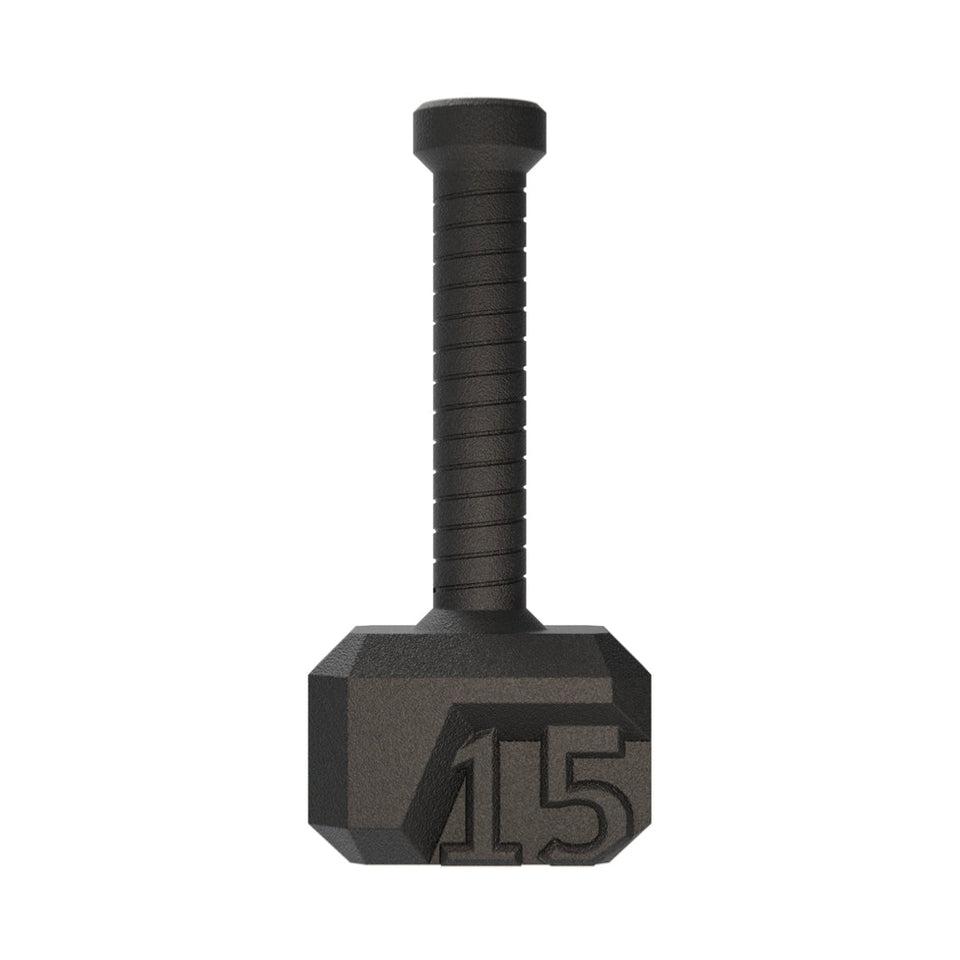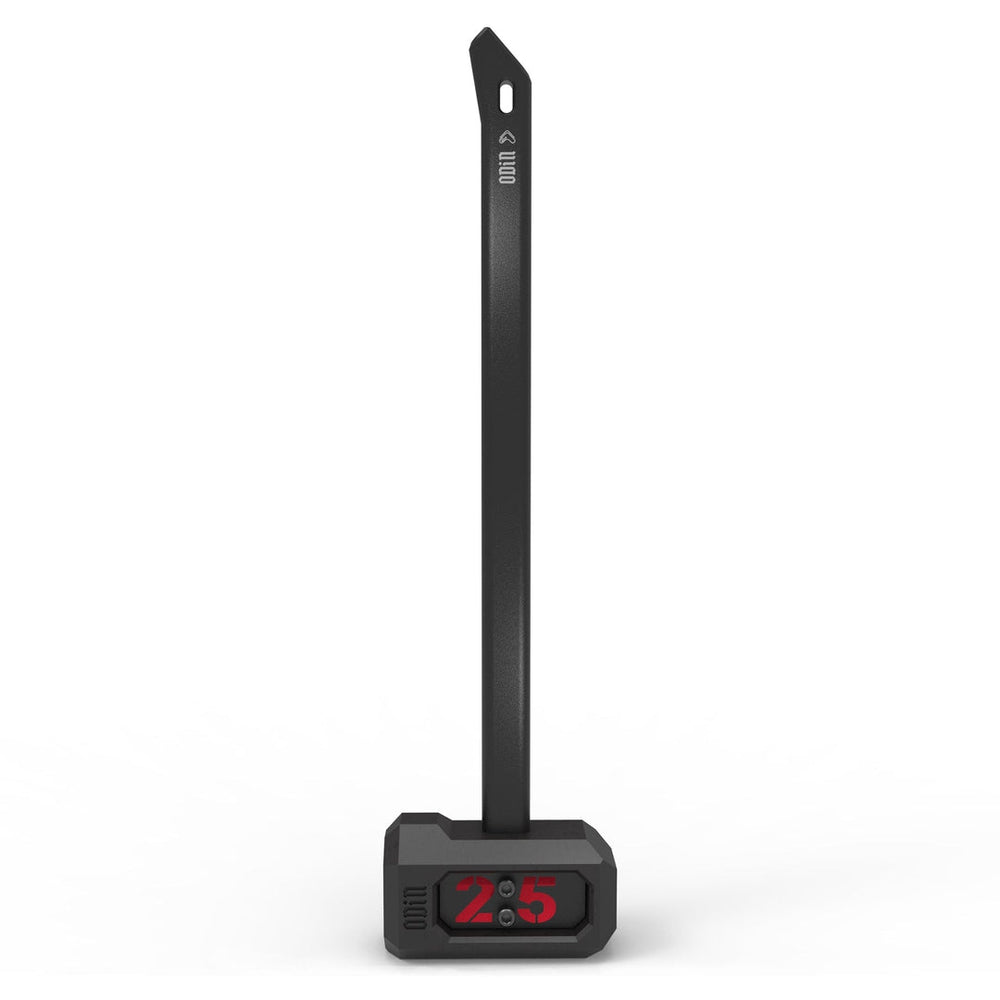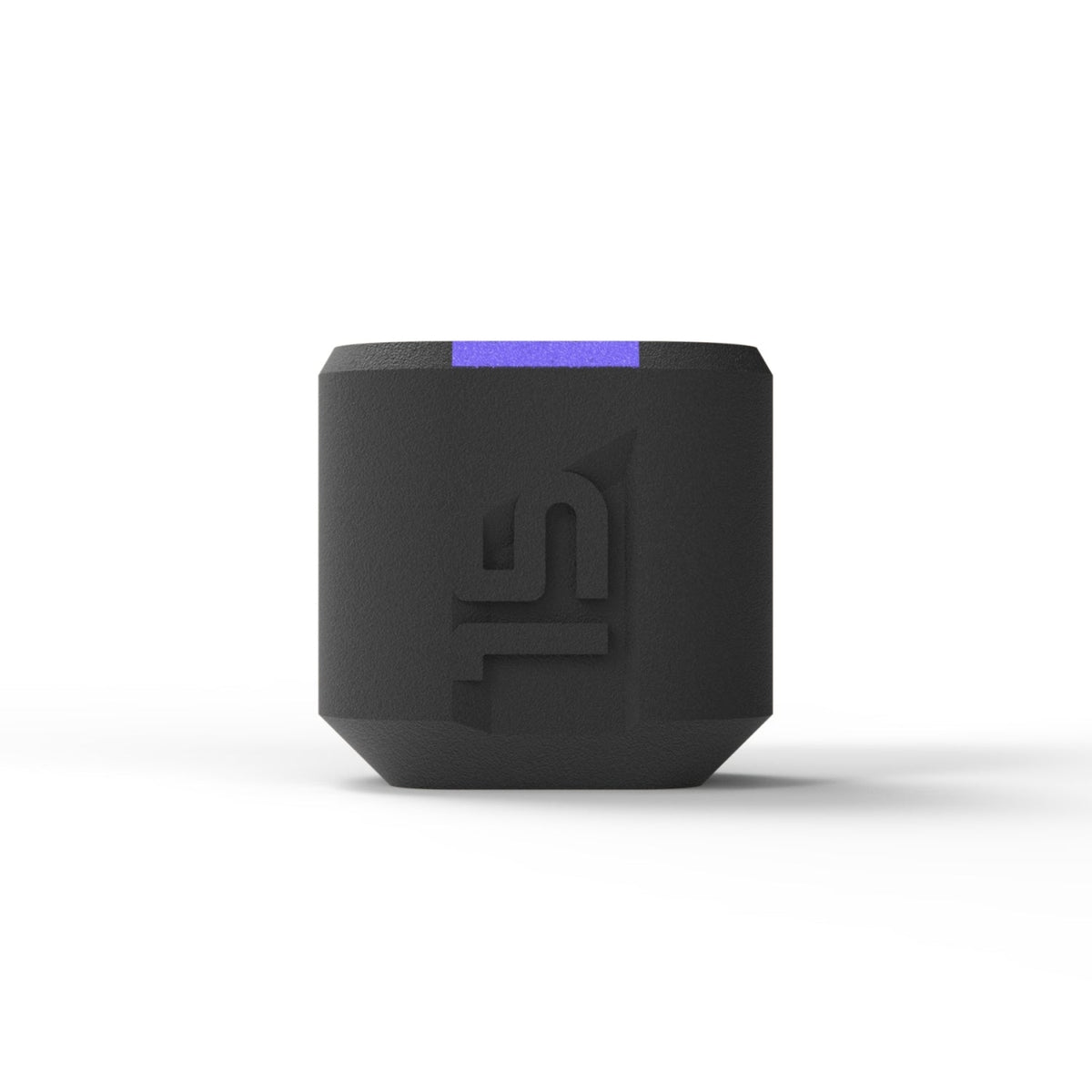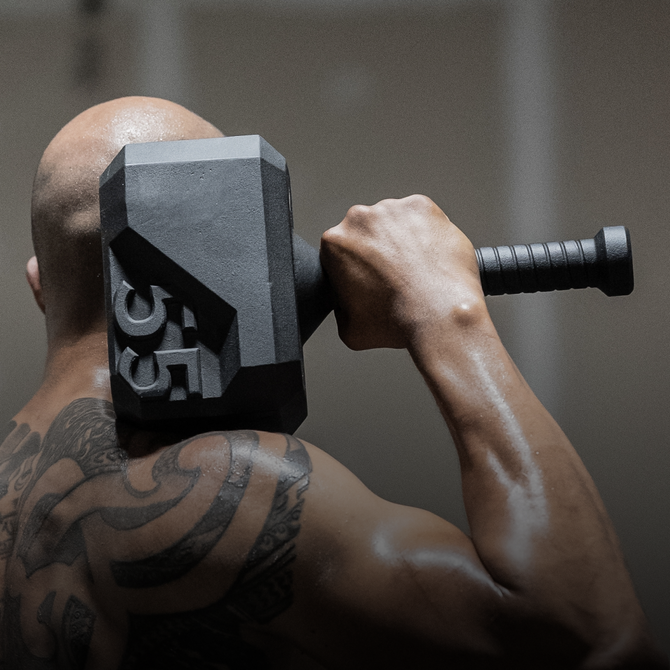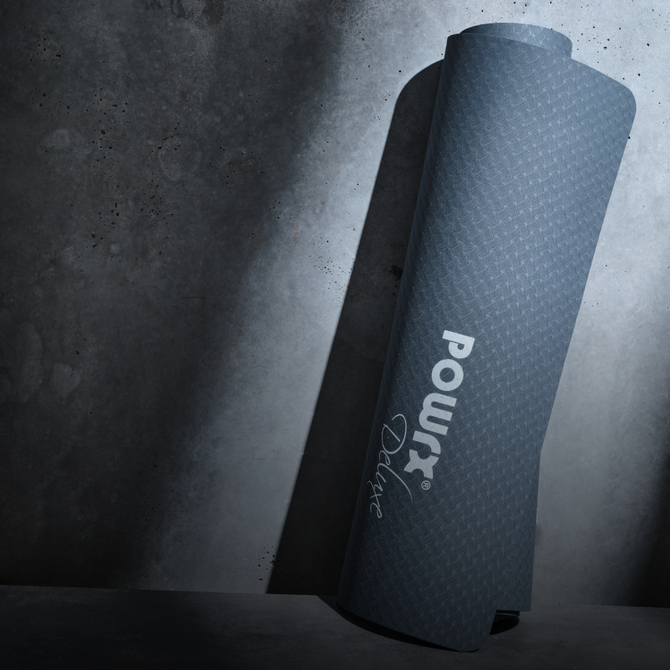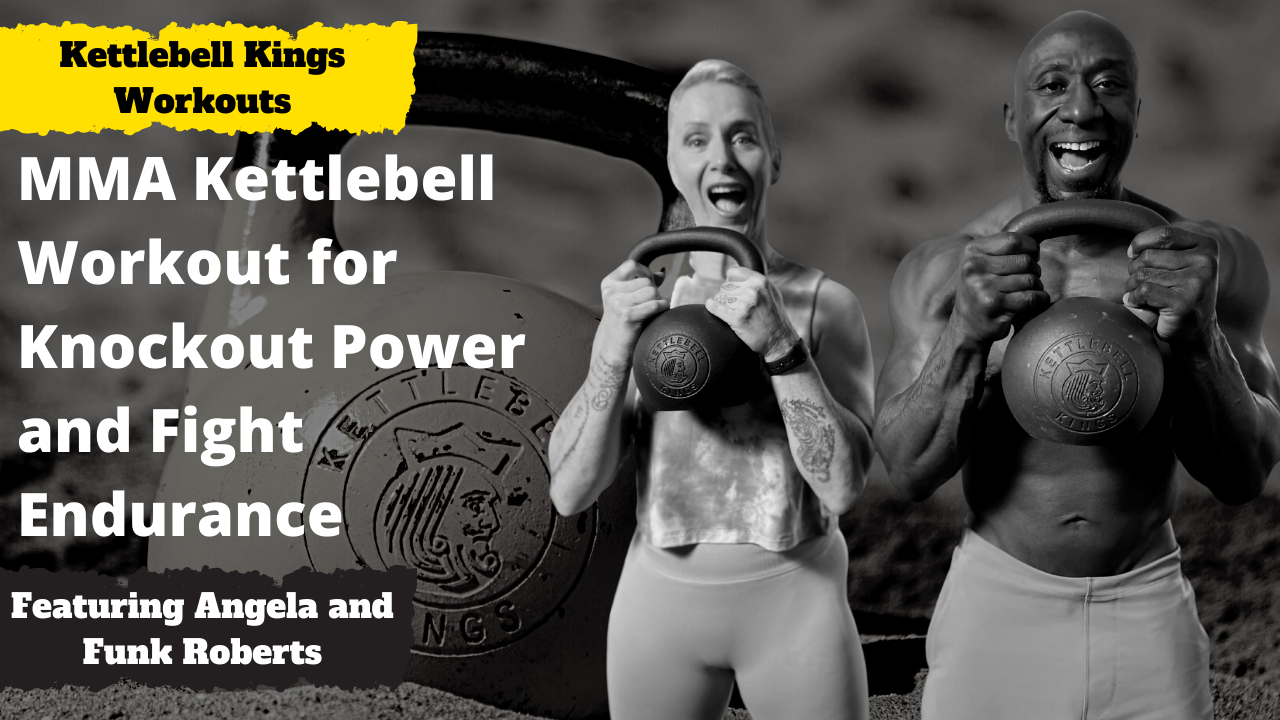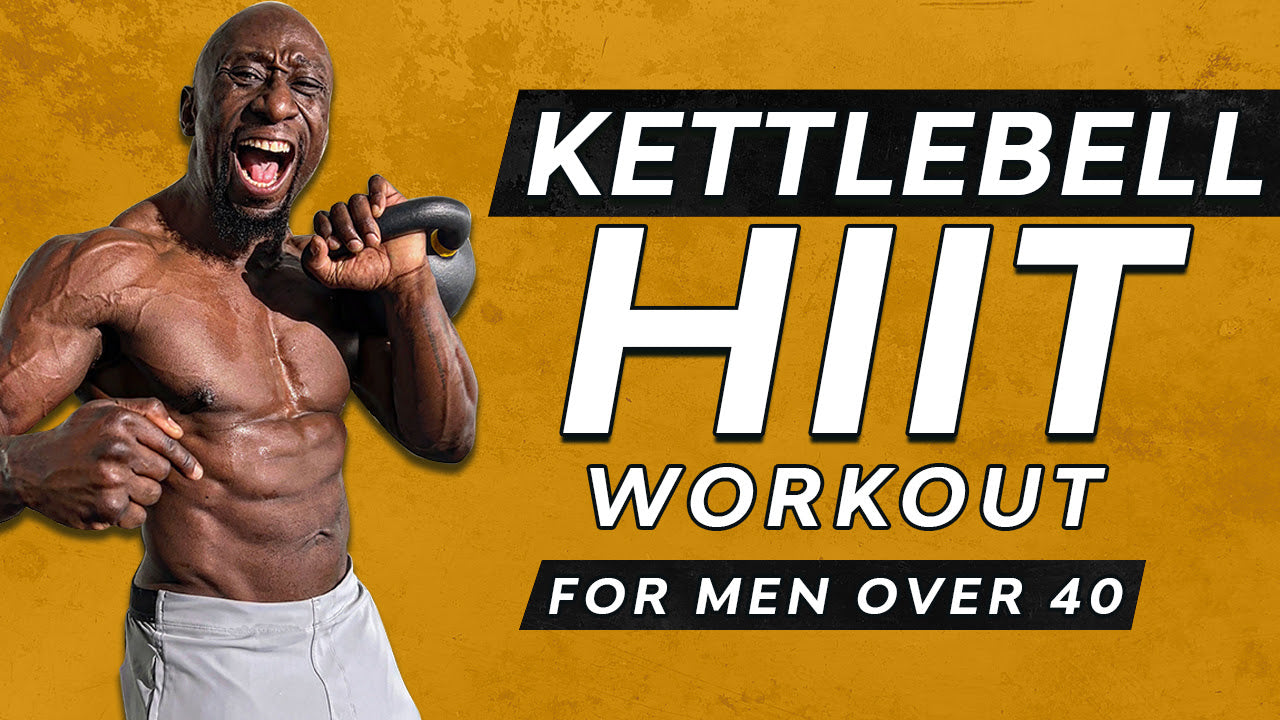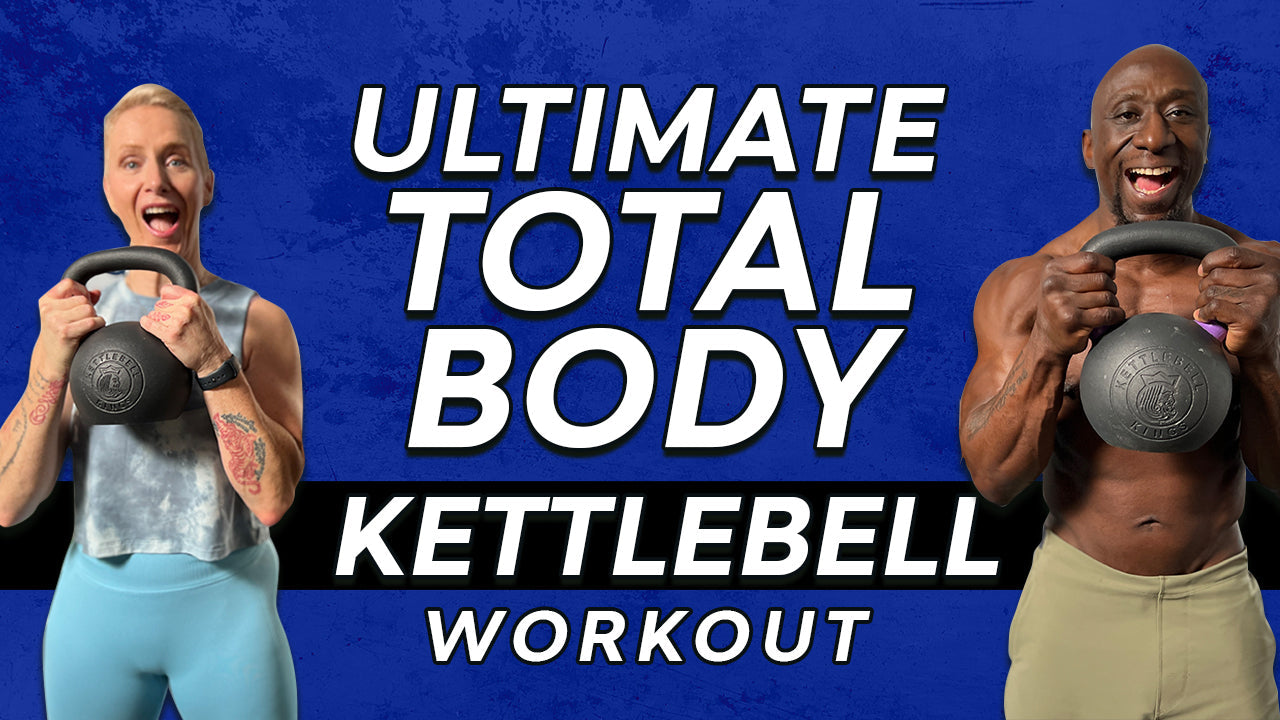Fighters are some of the toughest athletes out there. They spend countless hours a day training for endurance, stamina, strength, speed, explosiveness. But their discipline and commitment are what makes them successful.
For anyone that's fought before, or even just trained as a fighter, you know it's not easy. It takes mental, physical, and emotional strength and endurance like no other sports do. You're constantly pushing yourself to do better, be better, and perform better—both in and out of the gym.
If you want to be the biggest, baddest, and best fighter out there, you need to make sure your conditioning is on point. Whether you're throwing punches, takedowns, knees, or armbars, conditioning is at the heart of fighting.
That's why kettlebells for fighters are my #1.
I'm breaking down the attributes all fighters need to be successful and giving you the top 6 reasons why effective conditioning for fights must involve kettlebells.
5 key attributes of a fighter
Fighters aren't a one-trick pony. They're not the strongest in their class. They're not the most powerful. Or the most mobile. But fighters train every single aspect of their fitness for optimal performance. Being a fighter means being a well-rounded athlete. You're strong in all categories and you're constantly pushing yourself to do better on a daily basis. You're consistent, driven, motivated, and disciplined.
But fighting isn't all about the mind—there's also a major physical component.
1. Speed and explosiveness
How fast can you counter a punch? How fast can you shoot when your opponent goes for a takedown? How fast can you slip from a jab? Speed and explosiveness are the backbones of martial arts. While how fast you can execute a technique can make or break your performance, it's also about how fast you can throw, kick, pivot, shuffle, and more efficiently under immense pressure. Speed and explosiveness can definitely be trained with kettlebells, but things like sprints, ladders, medicine balls, plyometrics, and even shadowboxing are also great things to work on to develop quickness.
2. Explosive power and strength
Two of the biggest confusions in the fitness world are strength and power. They're often used synonymously and while they have some of the same features, they're not the same. Strength (think about a Strongman) is your ability to overcome resistance—in whatever form it may present itself. For you, it could be a grappler, Muay Thai athlete, boxer, or wrestler trying to win the fight. It could also be a 150lb tire you're trying to flip.
While strength is no doubt important for fighters, it's not all about how strong you are. Most martial arts are actually about your technique and how well you can use your body. That said, there are situations when strength is needed. For example, there will be times when you'll need to physically lift and throw your opponent, or restrain, clinch and move, or manipulate the joints, all of which require the ability to exert influence over a resistive opponent. But the key to maximizing strength is to ensure you're strengthening all of your muscles, not just the big guys. And because kettlebells are a highly unstable force, they're great for hitting them all.
Power, on the other hand, is how fat you're able to overcome a resistant force (ie move it in the shortest amount of time). For martial artists and fighters, having explosive power is a major part of the sport because it allows you to quickly and effectively outwork your opponent. While strength may be needed at certain points in your fight, power will persevere and take you to the end.
3. Endurance
While all attributes of a fighter are important, the level of your endurance is perhaps top. With aerobic and anaerobic endurance, your ability to win a fight takes a massive hit. How are you going to survive five rounds of five minutes with minimal rest? If you don't have amazing cardiovascular and muscular endurance, you need to get moving on it. Training with kettlebells if one of the best ways to train both aerobically and anaerobically to maximize the efficiency of your body to produce energy and perform under any circumstance.
4. Mobility and flexibility
There's no denying that the movements of fighters are totally different from any movement you'll see in a bodybuilder or CrossFit workout. You're testing your body's ability to manipulate and rotate joints and soft tissues, and for that to happen you need adequate mobility and flexibility. You need to be able to effectively move joints through their entire range of motion and to do that requires the ability for them to stretch and contract functionally. Alignment and stability optimize flexibility. When joints are not aligned properly, it compromises stability, which restricts mobility and flexibility, leading to dysfunctional movement patterns.
5. Core strength
If you break down the movements of any fighter, you'll notice one thing in common—a strong core. Your core is literally at the heart of your body and without core strength, all of your movements are going to suffer. Whether it's punching, kicking, squatting, or hip bumping, your core is either directly or indirectly involved somehow. But core strength and stability aren't all about the abdominal muscles that we can see. While strength in the superficial muscles is important, all the deep stabilizers and obliques are also key for strengthening the body and stabilizing the spine. Strengthening the core through planks and abdominal exercises are a direct way to build core strength, but incorporating compound and unilateral movements also challenges your body and forces you to keep your core engaged to maintain stability, thereby indirectly building strength.
The 6 benefits of kettlebell training for fighters
As much as I'd love to say conditioning for athletes is simple, it's not. These athletes need to strike a balance between quick, explosive, and repetitive strength production, along with having the endurance capacity to maintain these qualities over a match that has the potential to last anywhere from 5 to 25 minutes.
It may sound like mission impossible to train for both explosive strength and endurance—and to do it without burning your athlete out. Let me tell you, it can be accomplished. And one of the best tools I've found to do it is the kettlebell. Training kettlebell circuits with different weights, dynamic exercises, and time intervals allows combat athletes to build strength, explosiveness and power, and attain a high level of endurance that can be maintained regardless of the duration of the match.
So, let's cover some of the major benefits of kettlebell conditioning for fighters.
1. Burns fat faster
There's nothing fun about cutting weight. Sweatsuits, saunas, skipping, and whatever else fighters have to do make weight. But what if you could burn fat and reduce the severity of your cut? Kettlebells do that by something called excess post-oxygen consumption, or EPOC for short. EPOC is the amount of energy required for your body to return to its normal resting state after high-intensity workouts. Because this requires major energy input, you're burning calories even after you've stopped training. But when fighters are cutting, they need to lose fat while maintaining muscle mass. Kettlebells do exactly that. They're burning fat while building muscle and strength.
A 2011 study found looked at the effects of a 45-minute high-intensity workout on metabolic rate. Subjects completed a bout of cycling at approximately 73% of VO2max (roughly 84% of maxHR) for 45 minutes. On average, subjects burned 520 calories in the training session but increased their resting energy expenditure by 190 compared to normal. That's a whopping 37% more calories than the workout itself in the 14 hours post workout.
2. Build muscle and power
Building strength and power among muscles on the back of the body—the posterior kinetic chain—is incredibly important for all fighters and combat athletes. Well-executed kicks or takedowns require power in the hips and legs. Regardless of how strong your upper body is, without a strong and mobile lower body, your execution is always going to be suboptimal. On top of that, grapplers require strong glutes for bridging or strong and mobile hip flexors for shrimping. The erector spinae support your upper torso and without a strong, stable back, your technique is useless.
Kettlebells are one of the most effective tools for strengthening your entire posterior chain. Because the unique design of a kettlebell means its mass extends beyond the hand and where your grip is, they facilitate full-body ballistic movements. And while there's a wide array of exercises you can perform to build posterior chain strength, there's nothing quite like the kettlebell swing. It's one of the best kettlebell movements for fighters to develop thick back muscles, strong and powerful glutes and hamstrings and intense trap strength.
But that's not it. Because kettlebell movements can be done either slow and deliberate or fast and explosive, you're also maximizing muscle activation to build maximum strength and power.
3. Reduces muscle imbalances
Muscle imbalances can be a major hindrance to all athletes but especially to fighters. It's normal to be more dominant on one side of the body, but if you want to be an effective fighter, muscle imbalances are a no-go. When left unchecked, imbalances can derail your progress long-term and create the potential for major injuries. Overactive muscles can pull your body into poor posture or poor movement patterns, which impairs mobility in joints and creates muscle stiffness. While most muscle imbalances happen at highly mobile areas of the body (hips, shoulders, thoracic spine), they're not relegated just to those—they can happen anywhere.
But there's an easy fix—kettlebells. Most conventional strength exercises are bilateral, but the beauty of kettlebells is that many movements are unilateral, which gives your body a chance to build strength and curb imbalances.
4. Improves balance and coordination
Whether you're throwing a punch, dodging a jab, executing a kick, or going in for a takedown, balance and coordination are non-negotiable. And there's nothing quite like an offset weight to improve your balance and coordination. Unlike dumbbells or barbells, the weight distribution of a kettlebell means that your form needs to be on point in order to perform the exercise correctly and avoid injury, but the unilateral nature of many kettlebell movements also improves balance and proprioception. Without kinesthetic awareness, mobility, and stability, there's no chance you'll be able to execute many of these movements. And that balance and coordination translate directly to the ring, mats, or wherever you fight.
5. Build core strength
Core strength is a major asset for all athletes. But having core strength isn't just about having abs—it's about building strength and stability to support your entire body.
The core works as a single unit, engaging to protect the body and transfer force from muscles of the lower body to that of the upper body during movements. But it's also one of the most important factors involved in the transfer of explosive power. Weak core muscles mean that your nervous system puts a screeching stop to any explosive movement to protect the spine from injury.
As a result, when you're striking or kicking, you're losing a huge amount of energy. So, not only are your movements ineffective, but you're also increasing the risk of injury because that force isn't landing and transferring through your opponent. Essentially, a strong and stable core allows your body to function as one unit and complete movements with proper force. If the core is weak, the bridge will collapse and the extremities will, in turn, be weak.
All powerful movements originate from the center of the body, never from just the legs or just the arms. You need to develop a stable spine before you can develop powerful, explosiveness muscle contractions from the limbs. Compound, unstable movements are some of the best things you can do to build strength and stability in all of the core muscles. And because the nature of kettlebells shifts the center of gravity and forces you to engage and brace your core, you're building functional strength and stability in the spine with every movement.
6. Reduces risk of injury
No fighter wants to be injured, but unfortunately, injury is inherent to the sport. But if you can strengthen your body and protect against injury with your strength and conditioning workouts, why wouldn't you. Whether it's a broken wrist, dislocated shoulder, or strained hip flexor, fighters aren't unfamiliar with breaks, sprains, and strains due to heavy impact day in and day out. Kettlebells, however, are super effective for maximizing muscle recruitment and strengthening the tiny stabilizer muscles that protect your body from injury. That way, you don't have to worry about movement compensation and poor movement patterns with every kick, punch, or slip.

Resources
Knab AM, Shanely RA, Corbin KD, Jin F, Sha W, Nieman DC. A 45-minute vigorous exercise bout increases metabolic rate for 14 hours. Med Sci Sports Exerc. 2011;43(9):1643-1648. doi:10.1249/MSS.0b013e3182118891
Funk Robert's bio
Funk is also a Certified Master Metabolic Trainer, Certified MMA Conditioning Coach (MMACA) NESTA, Kettlebell Training Specialist, Certified Fitness Nutrition Coach, Core Conditioning Specialist (NESTA), Pain-Free Performance Specialist and Mindset Coach.
With 20 plus years' experience he has helped over 1 million fitness enthusiasts, combat fighters, trainers and coaches reach their fitness goals and improve athletic performance through his over 100 online metabolic workout programs.
In the past Funk has helped fighters prepare for battle in most of the major MMA and Combat promotions including UFC, OneFC, Bellator, WSOF, KSW, Glory Kickboxing, RFA, AFC, Lion Fight, K1, ADCC, Grapplers Quest and many other organizations making him one of the strength and conditioning leaders in the combat sport community.
Angela Roberts BIO
Coach Angela Roberts is a Certified Advanced Kettlebell Specialist, former unbeaten professional Muay Thai Fighter, former champion bodybuilder and certified as a personal trainer. Angela's style of training brings kettlebell workouts to the next level and her understanding as a fighter, lends to implementing the perfect exercises with each workout. She is known for her famous #AngWODs
Angela is also Funk's wife! THE BETTER HALF!
Join Funk and Angela Kettlebell Spartan Academy for just $1 with 18 phases of monthly follow along single kettlebell workout programs

